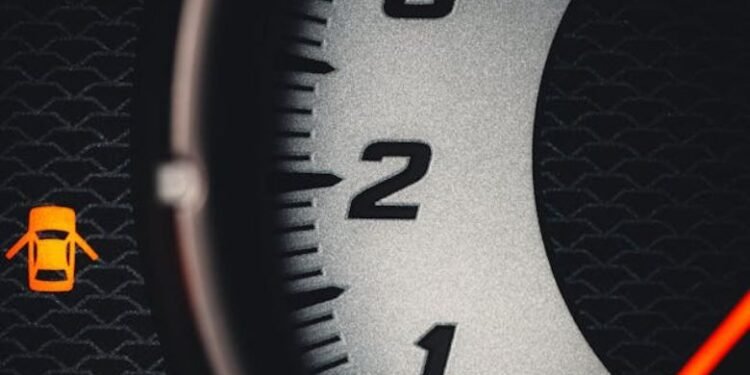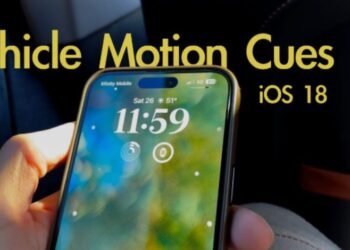Propulsion Power Is Reduced Chevy Volt? Discover causes, fixes, and tips to get your Volt running smoothly again.
I still remember the exact moment my dashboard lit up with the ominous message: “Propulsion power is reduced.” My heart dropped. I was cruising down the highway in my Chevy Volt, feeling like the eco-friendly hero of my commute, when suddenly … bam … that warning popped up like a horror movie jump scare, making me instantly wonder if I’d entered yet another kind of technical nightmare just like when people try to Fix Device Prohibit issue on their gadgets.
I muttered, “What does the propulsion power is reduced Chevy Volt even mean? Is my car about to die right here?” If you’ve landed here, I know you’re probably in the same boat (or Volt?) … confused, slightly panicked, and frantically Googling before deciding whether you should pull over or pray.
So, let me walk you through everything I wish someone had explained to me back then. This isn’t just a boring technical guide … this is the full journey: what causes the issue, what you should do immediately, real repair options, costs, and how to prevent it from happening again. Let’s unpack this together.
What does “propulsion Chevy Volt is reduced” mean?
In simple terms, your Chevy Volt is entering a protective mode. It’s like your car saying, “Hey buddy, something’s not right, so I’m limiting how much power you can use until we figure this out.” This is often referred to as limp mode.
What this warning typically indicates:
- A problem with the high-voltage system
- A performance issue with the battery
- A malfunction in the hybrid system or charging system
- A sensor or module communication error
When the propulsion power is reduced Chevy Volt message appears, the vehicle usually limits acceleration and may even cap top speed to prevent further strain on the system.
Why Does the “Propulsion Power Is Reduced” Message Happen?
There are multiple possible causes, and some are minor while others are serious.
🔍 Most common causes:
| Cause | Severity | What it means |
| Battery cell imbalance | Medium | One battery section underperforming |
| Low state of charge in cold conditions | Low | Cold temps reduce efficiency |
| Faulty battery system sensor | Medium | Car can’t read battery data correctly |
| Charging system malfunction | High | Possible high-voltage system failure |
| Inverter or drive unit issue | High | Power delivery problem |
| Software glitch | Low | System may need reset or update |
| Weak 12V auxiliary battery | Medium | Can trigger system-wide errors |
When I experienced the propulsion power is reduced Chevy Volt warning, mine turned out to be a faulty battery sensor … but I didn’t know that until later.
My Personal Story: From Panic to Diagnosis
So there I was, in mild crisis mode, going 65 mph and wondering if my Volt was going to shut down on me. I decided to stay calm, exit the highway, and give the car a moment. The message stayed. Power was noticeably weaker.
I drove carefully to a parking lot, turned the car off, took a deep breath, and restarted it.
The warning disappeared.
“Maybe it fixed itself?” I thought. But nope … the next morning, the propulsion power is reduced Chevy Volt message came right back, stronger than ever.
At that moment, I realized: This was not a glitch. Time to troubleshoot.
Take action immediately when you see a warning
If the warning appears suddenly, here’s a safe and practical checklist:
- Stay calm – Your car is not exploding.
- Check the battery level – Is your high-voltage battery low and it’s freezing outside?
- Pull over safely – If acceleration drops significantly.
- Restart your vehicle – Sometimes this clears a temporary glitch.
- Read any other warning lights – Especially check engine or battery icons.
- Plug into a Level 2 charger – A full, warm recharge may stabilize battery cells.
- Check 12V battery health – Many Volt owners report weak 12V batteries triggering this warning.
- Scan the codes – Use an OBD-II scanner or take it to a mechanic.
How Mechanics Diagnose the Issue
When I finally took my Volt in, they ran a battery health check and scanned for diagnostic trouble codes (DTCs). Common codes associated with the propulsion power is reduced Chevy Volt error include:
| Code | Meaning |
| P0AFA | Hybrid battery system voltage low |
| P1E00 | Energy control module issue |
| P1FFF | High-voltage system problem |
| P0C78 | Drive unit performance issue |
| P1EAC | Battery cell imbalance detected |
Repair Costs: What You Might Be Looking At
| Issue | Possible Fix | Estimated Cost |
| 12V battery weak | Replace battery | $150–$300 |
| Battery sensor failure | Replace sensor | $200–$600 |
| Cell imbalance | Recalibration/software update | $200–$500 |
| Inverter issue | Repair/replace | $1,000–$2,500 |
| Full battery failure | Replace entire pack | $3,500–$9,000 (rare) |
Thankfully, my issue was mid-range. The sensor replacement and software recalibration came out to about $450.
Cold Weather Can Trigger the Error
If you’re in freezing conditions, your Volt may struggle with battery efficiency and throw the propulsion power is reduced Chevy Volt warning when power draw exceeds what the cold cells can deliver.
Pro tips for winter:
✔ Precondition your vehicle while plugged in
✔ Keep it charged above 30%
✔ Park indoors if possible
Can I Drive With the Warning On?
Short answer: Yes, but with caution.
If performance is heavily reduced or the car feels unsafe, pull over. Otherwise, carefully drive to a safe location, home, or a service center.
But ignoring the propulsion power is reduced Chevy Volt message long-term? Not recommended.
What Happens If You Ignore It?
- Reduced performance becomes more frequent
- Full shutdown possible if system detects risk
- Battery damage risk increases
- More expensive repairs may be needed later
How to Prevent It (Or At Least Reduce the Risk)
| Action | Why it helps |
| Regular battery health check | Catches early imbalances |
| Replace weak 12V battery proactively | Prevents false codes |
| Keep firmware/software updated | Fixes known bugs |
| Avoid deep discharge in freezing temps | Protects cell health |
| Use Level 2 charging regularly | Balances battery modules |
Quick Analogy: Think of It Like Your Phone on Low Power Mode
When your smartphone battery gets too hot/cold or drops too low, it reduces performance to protect itself. That’s exactly what your Volt is doing when propulsion power is reduced Chevy Volt appears … slipping into low power mode to save itself.
FAQs
What does “propulsion Chevy Volt is reduced” mean?
It means the car is limiting power due to a detected issue with its power or battery system.
Is it safe to drive?
Usually yes, temporarily. But you should get it checked soon.
Will a restart fix it?
Sometimes, but repeated warnings need diagnosis.
Can extreme weather trigger it?
Yes, especially cold temperatures.
Is this a common issue?
Yes, especially in older Volt models or during battery wear stages.
Key Takings:
- Seeing the propulsion power is reduced Chevy Volt message can feel like your car just betrayed you.
- I get it …I’ve been there. In my case, it wasn’t catastrophic. It was a warning that something needed attention before becoming a bigger problem.
- If your Volt is giving you this message, don’t panic.
- Treat it like a cry for help, not a death sentence. Diagnose it, take action, and your Volt will likely keep powering your journey just fine.
- And hey …if anything, this gives you a great story for the next EV meetup or coffee run with a fellow Volt fan.
Additional Resources:
- Owner/Forum discussion – “Propulsion Power is Reduced? What’s actually happening?” (SpeakEV forum): helps you understand real-world user experience (battery low/thermal issues) and whether service is needed.
- Repair advice / troubleshooting article – JustAnswer: “Volt Low Propulsion & Charging Issues”: gives broader troubleshooting (cell balancing, recall 18V397000) and what you can inspect.
















